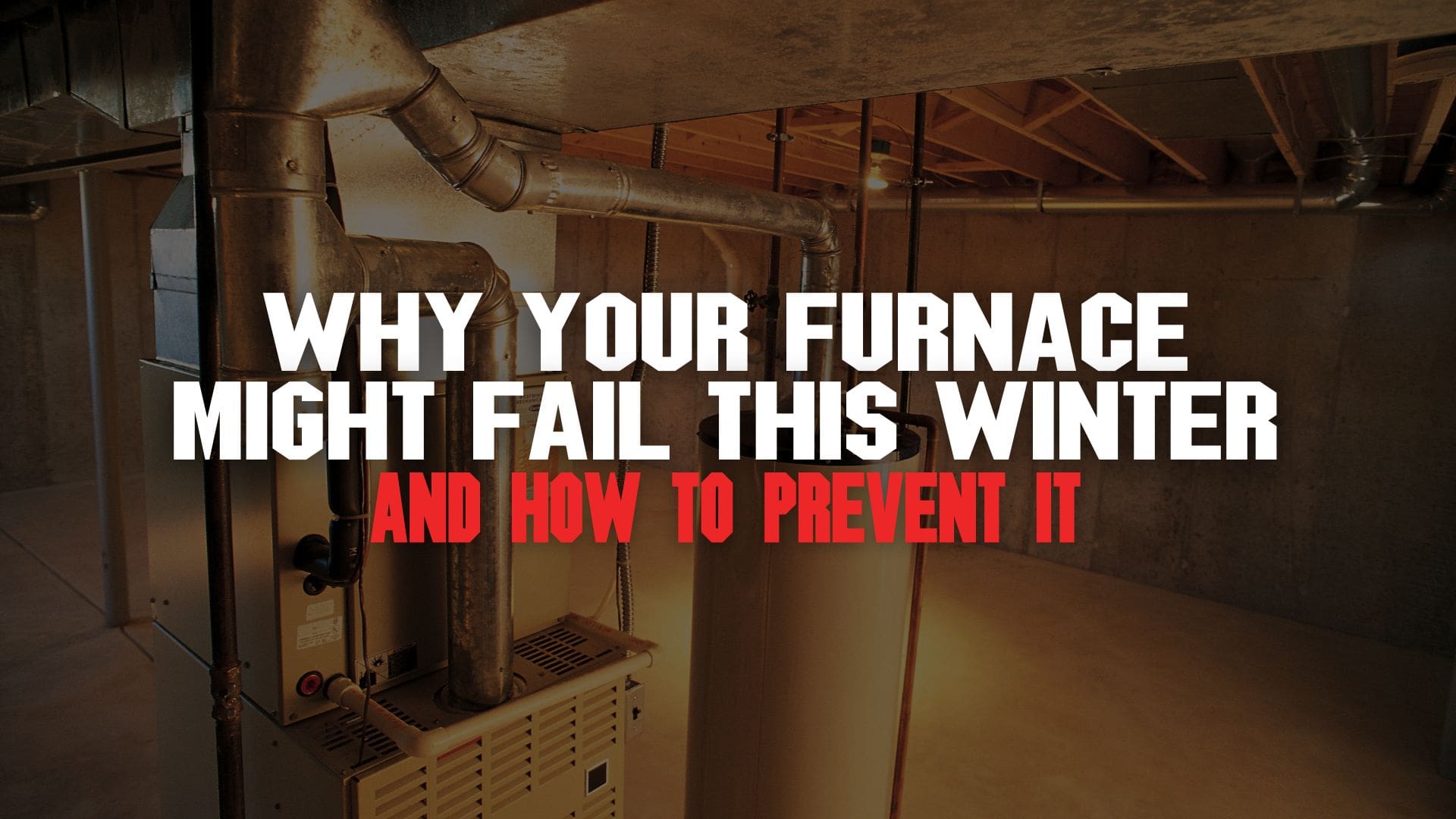
As temperatures drop in the greater Seattle area, there’s nothing worse than a furnace failing on a cold winter night. Furnace issues are more common during the winter because that’s when your heating system is working overtime. But don’t worry—most furnace problems can be avoided with a bit of planning and preventative maintenance.
At Titan Inspection Services, we want to make sure your furnace is ready to keep you warm all winter long! In this blog, we’ll break down the top reasons furnaces fail in the winter and how you can prevent costly repairs (or worse, an emergency furnace breakdown). Let’s dive in and make sure your furnace is ready for the colder months! 💪
1. Lack of Routine Maintenance 🛠️
One of the biggest reasons furnaces fail is simply due to a lack of regular maintenance. Over time, dirt and dust accumulate in your furnace’s filters, blower, and motor, causing it to work harder than necessary. This can lead to overheating, system breakdowns, or reduced efficiency.
- How to prevent it: Make sure to schedule regular furnace inspections, especially in the fall before winter hits. A professional inspection will catch small issues before they become big (and expensive) problems. And don’t forget to change your furnace filter every 1-3 months, depending on usage. A clean filter helps your furnace run more efficiently and keeps the air in your home healthier!
2. Ignition or Pilot Control Problems 🔥
If your furnace is struggling to ignite or the pilot light won’t stay lit, this could signal a problem with the ignition system. This is a common issue in older furnaces, but even newer systems can face this problem if not properly maintained.
- How to prevent it: During your home inspection or furnace maintenance, have a professional check the ignition or pilot control. Regular cleaning and maintenance of the pilot light, thermocouple, and ignition system can help avoid sudden breakdowns. If your furnace is older, it might be time to consider an upgrade for better reliability.
3. Dirty or Clogged Filters 🧹
Dirty air filters reduce airflow, which forces your furnace to work harder to heat your home. This extra strain can cause parts to wear out more quickly or even lead to system failure.
- How to prevent it: Check your filters monthly, especially during heavy use in the winter. Replace them as needed to keep your furnace running efficiently. Clean filters not only extend the life of your furnace but also improve your indoor air quality, helping you breathe easier in the colder months.
4. Thermostat Malfunctions 🌡️
Sometimes, the issue isn’t with the furnace itself but with the thermostat that controls it. If your thermostat isn’t calibrated correctly or isn’t communicating with your furnace, it can cause the system to turn on and off at the wrong times, leading to uneven heating or short cycling.
- How to prevent it: Have your thermostat inspected and tested during your fall home inspection. Consider upgrading to a programmable or smart thermostat that offers better control and efficiency, allowing you to keep your home comfortable without wasting energy.
5. Wear and Tear on Components 🔧
As your furnace ages, wear and tear on internal components can lead to breakdowns. This is especially true for parts like the blower belt, motor, and heat exchanger. If these parts aren’t checked regularly, they can fail when you need them most.
- How to prevent it: An annual home inspection can identify parts that are showing signs of wear and recommend repairs before they lead to a system failure. This is particularly important for older furnaces, where preventive maintenance can extend their lifespan and keep them running smoothly.
6. Blocked Vents or Air Ducts 🚪
If your vents or air ducts are blocked by furniture, dust, or debris, your furnace has to work harder to push air through your home. This can lead to overheating and breakdowns, as well as uneven heating throughout your home.
- How to prevent it: Make sure all vents are clear and unobstructed. Have your air ducts cleaned regularly to improve airflow and efficiency. This simple step can keep your furnace from overworking and help avoid costly repairs down the road.
7. Inadequate Furnace Size for Your Home 🏠
If your furnace is too small for the size of your home, it will constantly be running to try to keep up with heating demands. This not only leads to higher energy bills but also puts unnecessary strain on the system, leading to early failure.
- How to prevent it: When replacing a furnace, make sure it’s the right size for your home. A professional home inspection can help you determine if your current furnace is adequately sized or if you should upgrade to a more powerful unit to meet your heating needs.
Conclusion: Be Proactive to Prevent Furnace Failures This Winter
Winter in Seattle and the surrounding counties can be unpredictable, but your furnace doesn’t have to be. By scheduling a fall home inspection and performing regular maintenance, you can ensure your furnace runs efficiently all winter long. Titan Inspection Services is here to help you stay warm, save money, and avoid emergency repairs. Whether it’s a routine inspection or a more in-depth furnace checkup, we’ve got you covered!
Don’t wait until your furnace fails—contact us today to schedule your inspection and keep your home cozy and warm this winter. ❄️